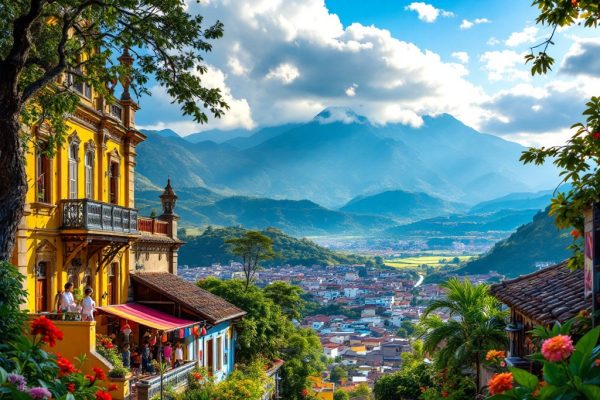How to Write a Sample Invitation Letter for Tourist Visa: A Step-by-Step Guide
Want to boost your tourist visa approval chances? A well-written invitation letter can be key. This guide details how an invitation letter strengthens your application, clarifies travel intentions, and assures officials of your return. Learn the essential components, step-by-step writing instructions, supporting documents, and common pitfalls to avoid. Increase your visa success – read on!
Important information

- While not mandatory, an invitation letter can greatly improve your tourist visa application’s success.
- The letter should clearly state the host’s information, relationship to the applicant, trip purpose, travel dates, and financial support details.
- Include supporting documents like the host’s passport copy, proof of residence, and financial stability proof.
- A detailed itinerary and a compelling travel narrative are essential for a strong application.
- Avoid common mistakes like omitting key details, fabricating relationships, or providing insufficient financial documentation.
Understanding the Role of an Invitation Letter in Visa Applications
A tourist visa invitation letter is a formal document from someone residing in your intended destination country. This host invites you to visit, strengthening your visa application by explaining your trip’s purpose and clarifying your relationship with them. The letter also confirms your accommodation arrangements. While not a requirement for a tourist visa, this optional document can significantly improve your chances of approval. It doesn’t guarantee visa issuance.
Is an Invitation Letter Mandatory for a Tourist Visa?
While a tourist visa doesn’t require an invitation letter, it can significantly boost your application. It clarifies your travel purpose and accommodation plans, demonstrating your connections to your home country and reassuring officials of your return. Having a letter strengthens your application by providing:
- clarity on your travel intentions,
- proof of accommodation arrangements,
- evidence of ties to your home country, assuring your eventual return.
How an Invitation Letter Can Strengthen Your Visa Application
A letter of invitation can significantly strengthen your visa application. It demonstrates your ties to your destination and reassures officials of your genuine travel purpose, reducing the risk of an overstay. The details about your itinerary and accommodations further alleviate concerns about potential financial burdens. A compelling invitation from a host adds credibility and reinforces your commitment to a responsible visit.
Key Components of an Effective Invitation Letter
Host Information
Provide your full name, address, contact information, and legal status (citizen or resident). Include copies of your passport or ID for validation.
Relationship with Applicant
Describe your relationship with the applicant (friend, family, business associate). Provide supporting evidence like photos or emails of past correspondence.
Trip Purpose
Clearly state the purpose of the applicant’s trip (tourism, family visit, event attendance). Include a detailed itinerary of planned activities.
Travel Dates
Specify the applicant’s arrival and departure dates, ensuring they align with their visa application.
Financial Support
Demonstrate your ability to support the applicant financially (bank statements, proof of income, financial guarantee letter). If the applicant is self-funded, state this and provide corresponding financial documentation.
Personal Details of the Host
To complete our records, we need the host’s full name, address, phone number, and email address. We also require their occupation and citizenship status.
Relationship Between Host and Visa Applicant
In your invitation letter, clearly explain your relationship with the applicant. This helps visa officers understand their reason for visiting. Whether you’re inviting family (parents, siblings, cousins), friends, or business associates, a clear description of your connection is crucial. For example, state “John is my cousin” or “Maria and I have been close friends for ten years.” Such context, supported by evidence like photos or emails, strengthens your application by demonstrating a genuine relationship. Ensure the visa officer readily understands your connection to the applicant.
Purpose of the Trip
Clearly state the purpose of your visit in your invitation letter, such as tourism, a family visit, or attending an event. A detailed itinerary supporting your stated reason for travel will significantly strengthen your application.
Exact Dates of the Trip
Clearly stating the applicant’s arrival and departure dates in the invitation letter is crucial for a smooth visa process. This information helps visa officers determine the intended length and purpose of the visit, allowing for a thorough assessment of its legitimacy. Providing precise dates minimizes ambiguity and strengthens the application’s credibility.
Demonstrating Financial Responsibility
Hosts can extend financial support for their visitors, covering expenses such as accommodations, meals, and travel. Including financial documentation, such as bank statements or proof of income, strengthens the offer and demonstrates the host’s ability to support their guest. This not only strengthens the host-visitor relationship but also facilitates a smoother, more enjoyable experience for everyone involved. Here’s why financial responsibility matters:
Benefits for Visitors
- Reassurance: Knowing their expenses are covered reduces stress and allows visitors to focus on their experience, not finances.
- Enhanced Trust: A clear financial commitment builds trust between the host and visitor, fostering a positive relationship.
- Smoother Trip: Pre-arranged financial support minimizes potential logistical issues related to payments during the visit.
Benefits for Hosts
- Increased Credibility: Demonstrating financial responsibility enhances a host’s reputation and trustworthiness.
- Attracts More Visitors: Visitors are more likely to choose hosts who offer clear financial assurances.
- Simplified Planning: Addressing financial matters upfront streamlines the hosting process and avoids later complications.
Providing documentation like bank statements or income verification further strengthens the host’s commitment and provides added reassurance for the visitor. This extra step can significantly enhance trust and contribute to a positive and worry-free experience for both parties.
Steps to Write a Sample Invitation Letter for a Tourist Visa
Start your invitation letter by placing your address and the date at the top, followed by the address of the embassy or consulate.
Clearly state the purpose of your invitation. Introduce the applicant and briefly explain your relationship with them.
Provide details about the purpose of the visit, including its duration and the planned activities. Include the applicant’s passport number and your contact information.
Assure the embassy of your commitment to supporting the applicant throughout their stay, including taking financial responsibility.
Close your letter politely and provide essential details, such as accommodation arrangements. Remember to attach supporting documents like proof of funds, accommodation confirmation, and a detailed itinerary.
Documents to Include with Your Invitation Letter
Demonstrate your financial stability with documents like bank statements, payslips, or a sponsor’s letter.
Confirm your accommodations with hotel reservations or a letter from your host.
Provide a comprehensive itinerary and travel narrative outlining your planned activities and destinations, including flight and tour bookings.
Common Mistakes to Avoid When Writing an Invitation Letter
Provide the visitor’s full name and passport number. Omitting these details can hinder their application.
Include your complete address and contact information. This is crucial for a successful application.
Honestly represent your relationship with the applicant. Fabrication undermines your credibility.
Clearly explain how you plan to support the visitor financially, providing solid evidence. Insufficient proof can lead to visa refusal.
Specify the visit’s purpose using clear and precise language. A formal tone and error-free grammar project a professional image.













